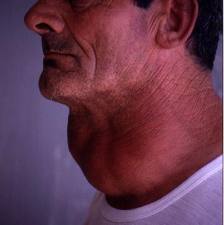Biology


- Renin-angiotensin-aldosterone Made Simple
The body has many systems that work together in order to maintain homeostasis. The renin-angiotensin-aldosterone pathway is no different. It has 3 functions: (1) to maintain a proper blood pressure/blood flow, (2) to maintain the right concentration of...
- Human Body Systems
Human Body Systems!Integumentary System: Your body is very prone to damage, and that's why we have this system! This is an organ system that helps protect the body. It has many functions such as to cushion, excrete wastes, regulate temperatures...
- #113 The Control Of Blood Glucose
The blood glucose concentration is regulated by negative feedback control mechanisms. Blood glucose concentration should remain at a fairly constant value of about 100 mg glucose per 100 cm3 of blood. If blood glucose concentration falls well below...
- Chemical Co-ordination
Click here for PDFEndocrine system includes endocrine glands and their secretions (hormones).Hormones are non-nutrient chemicals that act as intercellular messengers and are produced in trace amounts. HUMAN ENDOCRINE (DUCTLESS) GLANDS1....
- The Most: Related To Body Parts
1. Busiest organ Heart 2. Fastest known enzyme Carbonic anhydrase 3. Hardest part of the body Enamel of tooth 4. ...
Biology
List of Hormonal disorders
Disorders due to hormone deficiency (Hyposecretion)
| Name of disorder | Hyposecretion of | Symptoms |
| 1. Acromicria (in adults) | Somatotrophin | Bones of the face and extremities are small and delicate. |
| 2. Addison?s disease | Aldosterone | Hypertension, dizziness, vomiting, diarrhea, low blood sugar, low plasma Na+, high plasma K+, increased urinary Na+ and bronze like pigmentation of skin. |
| 3. Cretinism (in children) | Thyroxin | Retarded growth, low intelligence, delayed sexual maturity. |
| 4. Diabetes insipidus | Vasopressin (ADH) | Enormous secretion of urine (polyuria), excess thirst (polydypsia) etc |
| 5. Diabetes mellitus | Insulin | Hyperglycemia (high sugar level in blood), glycosuria (sugar in urine), polyphagia (overeating), polydypsia (excess thirst) and polyuria (frequent urination). |
| 6. Dwarfism | Somatotrophin | Short in stature. |
| 7. Myxoedema (in adults) | Thyroxin | Physical sluggishness, mental dullness, low metabolic rate, dry and coarse skin and puffy face. |
| 8. Tetany | Parathormone (PTH) | Steep drop in blood calcium level, abnormal rise in excitability of nerves and muscles, sustained and violent contraction of muscles of face, larynx, hands and feet. |
| 9. Eunuchoidism | Testosterone | Lack male secondary sexual characters, sterility etc |
Disorders due to excess hormone (Hypersecretion)
| Name of disorder | Hypersecretion of | Symptoms |
| 1. Acromegaly (in adults) | Somatotrophin | Abnormal growth of bones of face, lower jaw, hands and feet. Enlargement of internal organs such as lungs, spleen etc |
| 2. Adrenal virilism (in female) | Sex corticoid | Masculanization of females such as growth of beards and moustaches and male voice etc. |
| 3. Conn?s syndrome | Aldosterone | Headache, Excessive urination at night, Excessive thirst, Excessive urination, Increased volume of blood, Increased blood sodium level, High alkalinity of blood and body fluids, |
| 4. Cushing?s syndrome | Cortisol | High blood sugar, obesity, deposition of fat in the face, neck etc. rise in plasma Na+ and high BP. In acute condition it leads to mental depression and impotency. |
| 5. Exophthalmic goiter (Grave?s disease) | Thyroxin | Hypertrophy of thyroid gland, increased metabolism, high rate of heartbeat, bulging eyeballs, restlessness, nervousness and loss of weight. |
| 6. Gigantism (in children) | Somatotrophin | Excessive height, extreme bone, muscle and organ growth. |
| 7. Hyperglycaemia | Glucagon | Polyphagia, Polydipsia, Polyuria, Blurred vision, Fatigue (sleepiness), Weight loss Poor wound healing (cuts, scrapes, etc.), Dry mouth, Dry or itchy skin, Tingling in feet or heels, Erectile dysfunction, Recurrent infections, external ear infections (swimmer's ear), Cardiac arrhythmia, Stupor, Coma, Seizures |
| 8. Insulin shock | Insulin | Abnormal lowering of blood glucose (hypoglycemia), sudden fall of body temperature, fatigue, tremors and unconsciousness. |
| 9. Kidney stone | Parathormone | Accumulation of calcium in blood and it precipitate with phosphates to form kidney stones. |
| 10. Osteitis fibrosa cystica | Parathormone | Calcification of soft tissues like blood vessels |
- Renin-angiotensin-aldosterone Made Simple
The body has many systems that work together in order to maintain homeostasis. The renin-angiotensin-aldosterone pathway is no different. It has 3 functions: (1) to maintain a proper blood pressure/blood flow, (2) to maintain the right concentration of...
- Human Body Systems
Human Body Systems!Integumentary System: Your body is very prone to damage, and that's why we have this system! This is an organ system that helps protect the body. It has many functions such as to cushion, excrete wastes, regulate temperatures...
- #113 The Control Of Blood Glucose
The blood glucose concentration is regulated by negative feedback control mechanisms. Blood glucose concentration should remain at a fairly constant value of about 100 mg glucose per 100 cm3 of blood. If blood glucose concentration falls well below...
- Chemical Co-ordination
Click here for PDFEndocrine system includes endocrine glands and their secretions (hormones).Hormones are non-nutrient chemicals that act as intercellular messengers and are produced in trace amounts. HUMAN ENDOCRINE (DUCTLESS) GLANDS1....
- The Most: Related To Body Parts
1. Busiest organ Heart 2. Fastest known enzyme Carbonic anhydrase 3. Hardest part of the body Enamel of tooth 4. ...
